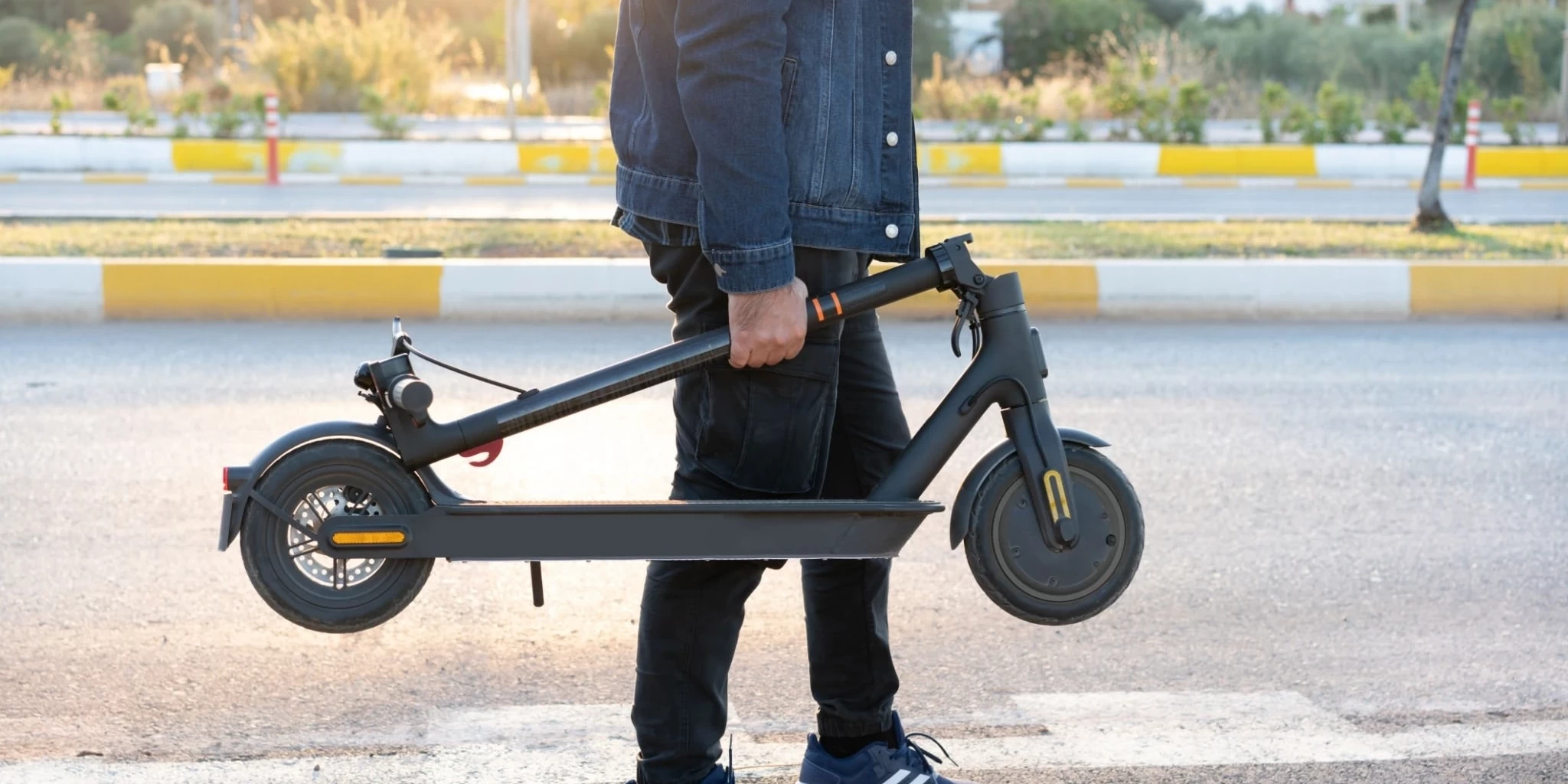Jump to:
E-scooters have been a popular mode of transportation for a few years, and their popularity doesn’t seem to wane anytime soon. They have become ubiquitous in many cities worldwide and have proven to be a convenient and cost-effective means of transportation. As with any product, however, e-scooters are made of various materials. The materials used to make e-scooters play a significant role in the safety, durability, energy efficiency, performance, and sustainability of the e-scooter. This article will delve into the materials commonly used for e-scooters, their benefits and limitations.

Frame Materials
E-scooters are made with several frame materials, each of which can affect the overall weight, durability, and rigidity of the e-scooter. The three most common materials used for the frame are aluminium, steel, and titanium. Aluminium is the most popular frame material used in most affordable e-scooters due to its lightweight, rigidity, and low cost of production. Aluminium also has the advantage of being easy to manufacture into complex shapes and sizes. On the other hand, steel is a more robust frame material and offers increased durability at the expense of being heavier than aluminium. Steel e-scooters tend to be more expensive, but they can withstand the wear and tear of frequent use while offering a smoother ride. Titanium is used in high-end e-scooters due to its strength, durability, and resistance to corrosion, but its high cost makes it less common.
Battery Materials
Batteries are essential to e-scooters, providing the power required to run the electric motor that propels the scooter. Lithium-ion batteries are the most common type of battery used in e-scooters. Lithium-ion batteries are compact, lightweight, and energy-dense, ideal for portable devices like e-scooters. They also have a longer lifespan and shorter charge time than other battery types, such as lead-acid or nickel-cadmium batteries. Lithium-ion batteries in e-scooters have contributed to their overall energy efficiency and minimized their impact on the environment.
Deck Materials
The deck of an e-scooter is the platform on which the rider stands, and it often serves as a shock absorber to provide a smoother ride. The most commonly used materials for the deck include aluminium, bamboo, and plastic. Aluminium is the most common due to its low cost and durability. Bamboo is also an emerging material becoming more popular in high-end e-scooters due to its flexibility and shock-absorbing properties. Plastic is a cost-effective option often used in budget e-scooters, but it is less durable and can crack easily upon impact.

Tire Materials
Tires are another crucial component of e-scooters, playing a significant role in the overall performance of the scooter. Three types of tire materials are commonly used in e-scooters: pneumatic, solid rubber, and airless. Pneumatic tires are the most common and offer superior handling, traction, and shock absorption, making them ideal for urban terrain. Solid rubber tires offer a lower chance of puncture than pneumatic tires but provide a harsh ride on rough terrain. Airless tires, also known as honeycomb tires, are a more recent innovation in e-scooter tires. They provide excellent puncture resistance and require minimal maintenance, but they offer the worst ride quality of all three types.
Brake Materials
E-scooters require brakes to ensure the safety of the rider and prevent accidents. Two types of brake materials are commonly used in e-scooters: mechanical and electronic. Mechanical brakes include a cable or lever the rider activates to slow down or stop the scooter. They are durable and require minimal maintenance, but they can wear out and require frequent replacement. On the other hand, electronic brakes use a regenerative system that converts kinetic energy into electrical energy that charges the battery and slows down the scooter. Electronic brakes require minimal maintenance and have a longer lifespan than mechanical brakes.
Motor Materials
The motor is the component that converts electrical energy into mechanical energy to drive the e-scooter. Two types of motor materials are commonly used in e-scooters: brushed and brushless. Brushed motors are cheaper but tend to wear out quickly, making them less common in modern e-scooters. Brushless motors are more efficient and durable, offering a longer lifespan and minimal maintenance, but they can be more expensive.
Other Materials Used In E-Scooters
In addition to the frame, battery, deck, tire, brake, and motor, e-scooters are made with other materials depending on their features and functions. For example, e-scooters that include headlights, taillights, or turn signals require plastic or glass components to protect the lights and provide a clear view for the rider. Similarly, e-scooters with suspension systems require additional materials such as springs, dampeners, and shock absorbers to ensure a smooth ride.

Sustainability Of E-Scooter Materials
The materials used to make e-scooters are crucial to the scooter’s environmental impact. Most e-scooters are designed to be energy-efficient and eco-friendly, essential for reducing the carbon footprint associated with transportation. Using lightweight materials such as aluminium and bamboo in e-scooters minimizes the energy required to move the scooter, leading to a lower carbon footprint. Using lithium-ion batteries in e-scooters minimizes the hazardous waste generated by lead-acid batteries commonly used in gas-powered vehicles. Airless tires also contribute to environmental sustainability by reducing rubber waste from punctured pneumatic tires.
E-scooters are made up of various materials that play a significant role in the safety, durability, energy efficiency, performance, and sustainability of the e-scooter. Advancements in material science have enabled the production of e-scooters that are lightweight, energy-efficient, and environmentally friendly. Understanding the materials used to make e-scooters can help consumers make informed decisions when choosing an e-scooter that meets their needs and aligns with their values.
Peaker
Meet Peaker, our suave electric scooter enthusiast from the charming streets of London. With a passion for sustainable urban mobility, Peaker navigates the world of electric scooters with a keen eye for style and efficiency. Whether he's zipping through the city or sharing his latest scooting adventures, Peaker is your go-to guide for all things electric and eco-friendly. Join him on the ride towards a greener, swifter future!





